Image Credit: All images: Greg Labbé
Image Credit: All images: Greg Labbé This lamp is dimmable. It looks as if it might form a better air seal at the ceiling flange than conventional light bulbs — plus it gets the Energy Star logo!
In 1999, I went through the back service doors of Wolf Electric, a local supplier, and fumbled my way along the poorly lit, uneven floors to drop $37 and tax for one light bulb: a compact fluorescent light (CFL) made by Philips.
For me, this was the start of energy-efficient lighting. That moment in time might even have represented the apogee of CFLs. Store shelves today are littered with crappy CFL lights that aren’t dimmable, are filled with hazardous mercury, and include ballasts that give off so much waste heat that the white plastic base quickly gets cooked to a yellow crisp as the bulbs sputter to an early death. So much for energy conservation.
Suddenly, LEDs have arrived
But hang on… Is it just us, or did 2015 usher in a new era of LED lighting? It seems that LEDs have jumped out of the dark ages by offering dimmable features and lighting systems that tie into home automation and can change hue in response to commands from a smart phone. These LEDs produce a truly beautiful light that doesn’t oscillate — light that is good enough to permit one to read a book (that is, a durable, sharable, battery-less device made of bound paper, having stories printed in ink). And let’s not forget the fact that these mercury-free lights could be substantially more durable than CFLs.
As readers may imagine, pot lights (also known as recessed can lights) installed through the air barrier of a home’s topmost ceiling have been a big pet peeve of mine — not because I don’t like the lights, but because they kill home performance. The great news is that some of the new LED lights that have flooded the market recently might be able to significantly reduce heat loss due to air leakage.
No need for an airtight hat in the attic
Lotus LED Lights (Surrey, B.C.) has been retailing some exciting low-profile pot lights that could substantially reduce the fussiness of installing pot lights.
It should be noted that good quality LEDs typically have aluminum heat sinks, and for good reason: the heat needs to dissipate. So take this next sentence with a grain of salt: These new lights could potentially eliminate the need for a large housing box that punctuates the air barrier system and projects into the attic, disturbing the uniform layer of continuous insulation and leaking conditioned air like a sieve.
Sadly, many electricians don’t understand the need for air sealing. These new faux-pot lights might be able to help them in new construction, because many models install directly in the drywall and are plugged into a proprietary low-voltage junction box. That simple!
What’s really exciting is that these lights may offer the opportunity to easily eliminate 90% of the air leakage that occurs through existing pot lights by simply retrofitting these new types of LEDs. Coming from a guy who made a living by sending other guys into hot, itchy attics to air seal the backs of pot lights — the LED product from Cree shown in the photo at the top of the page seems like a no-brainer retrofit solution.
Philips CFLs last a long time
I’m proud to say that for the last 16 years, the original Philips CFL light bulb that I bought in 1999 has been on a motion sensor in my back yard, extremely exposed to the elements, protecting us from marauding raccoons. It is still going strong. In this next wave of LEDs, my money’s on Philips — for their commitment to quality and durability.
Greg Labbé is co-owner of BlueGreen Consulting Group, a high-performance home consulting firm that works with architects, builders, and homeowners to optimize the energy performance of new and existing homes through detailed energy modeling and site testing.
Weekly Newsletter
Get building science and energy efficiency advice, plus special offers, in your inbox.

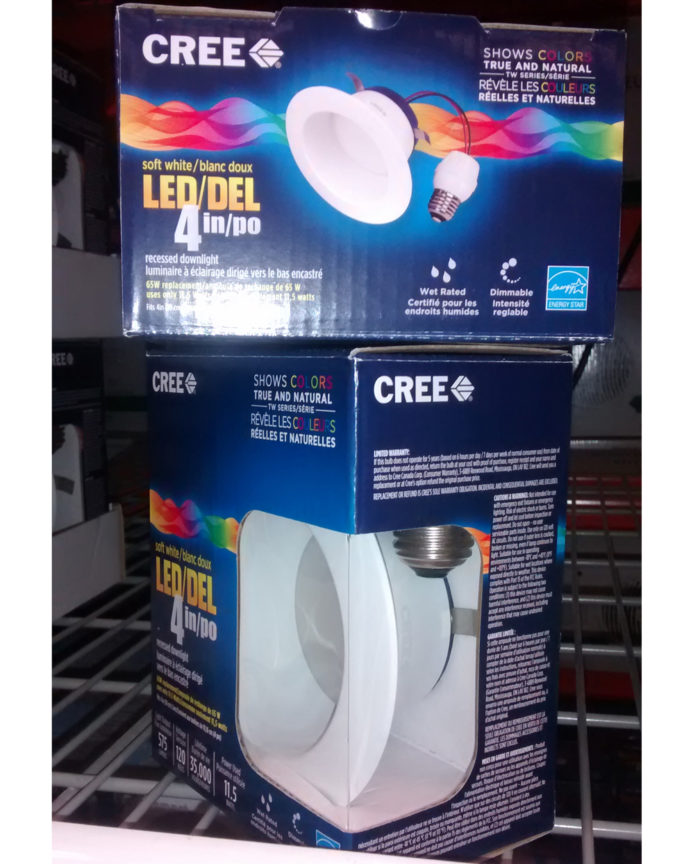




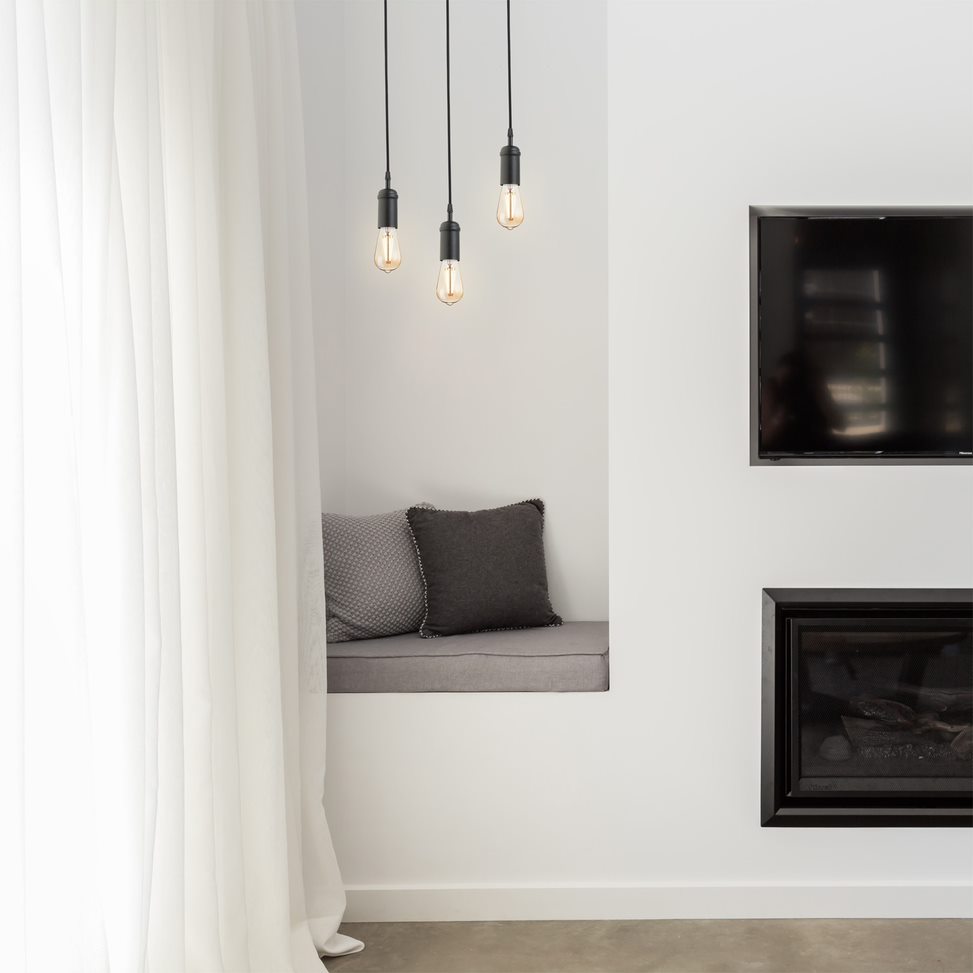
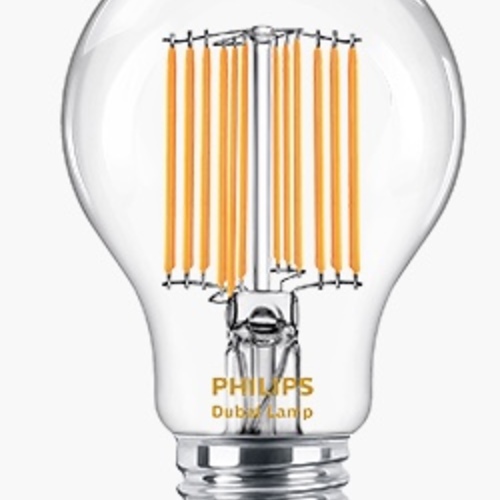
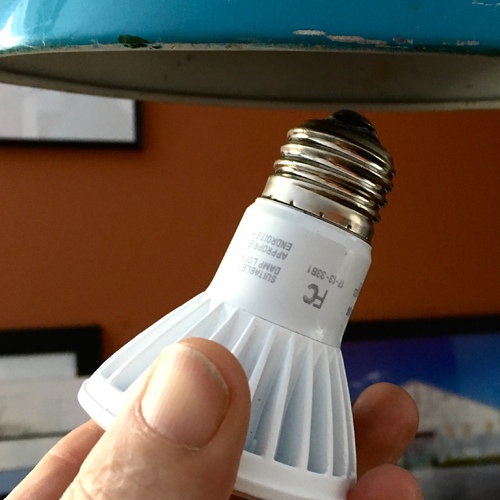
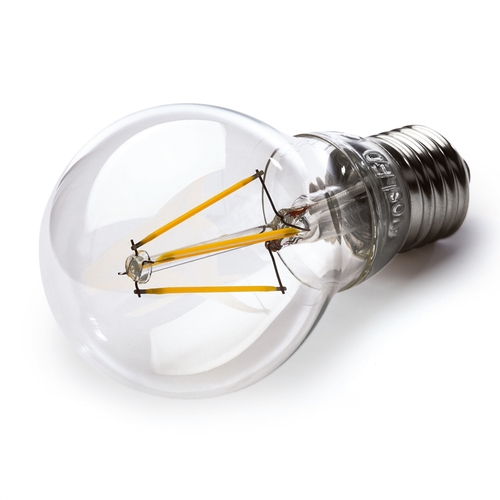






11 Comments
even better at half the price
The pictured Cree retrofit unit is described as a steal at $40. At the major US big orange box store, it's currently selling for $20. Even better! Also note that the hype on the box about "shows colors true and natural" is not just hype. That unit, with a TW suffix in the model number has a color rendering index of 90/100, vs. 80/100 for a typical Cree or other brand LED. The biggest difference is that it renders reds better. It does this without loss of efficacy by including red leds in addition to the typical blue-plus-yellow-phosphor combination.
Keep in mind these LEDs need
Keep in mind these LEDs need their heatsinks to have airflow to prevent overheating, and the heatsinks at least for the second one would be in the attic. I can't tell from the Cree pics where its heatsink is
Airsealing the top of them would likely lead to premature failure or shortened life (instead of 25k hours you may get 5k or less).
At 10W or less...
... the heat sinking issue is merely academic. The heat sinking on higher wattage LED assemblies is more about color drift and luminous efficiency drop off with temperature than it ever was about longevity.
As the LED processes have improved on efficiency the heat sinking needs have gone down too, which is why at the same luminous output an Edison base LED assembly sold in 2015 has comparatively less bulky heat sinks than similar output unit sold in 2010 or earlier. On the lower efficiency units than Crees or Philips the heat sinks sort of stand out.
The newest 800 lumen Cree CR6 has very subtle fins on the power supply housing below the socket base, but the newest 625 lumen version is smooth. That's a big difference from five years ago.
Some LED downlighting assemblies have tiny DC blowers that turn on when the temp gets above some threshold. I'm not sure if that is how the smooth-heatsink Crees are doing it though.
I can't agree, the heatsinks
I can't agree, the heatsinks on my 60W equiv bulbs get to 92ºC, i can burn my hand on them easily. I also work with high power flashlights, 1000 lumens at 10W, they use high emissivity anodizing but if tailstanded will burn you, if you hold them and especially use them outside the heat dissipates no problem. Current LED bulbs are in the 60-90lm/W range, when they get to 200lm/w then it would be mostly academic. Today you can get 200lm/w with the latest cree LED chips at 1 watt, in a few years they should be able to pull it off at 5-10 watts
Thermal images
In the process of researching the article on filament bulbs, I discovered that ledbenchmark.com has thermal images for everything they test - including pot lights like these.
For example:
A 10W model with heat sink fins
A smooth bodied 12W model
For comparison:
A Cree screw-base bulb that draws 5.5W
An LED filament bulb that draws 5.6W
Note, these are all in open air.
And the point is...
Yes, the reach temps higher than the ambient, higher than human body temp. And... ?
Most electronics (including LEDs) do not suffer severe lifecycle altering degradation at ambient operating temps north of 100C. LEDs start to drop off on luminous output and suffer a color shift at higher temperature, but there's no basis for assuming that installing it in an unvented fixture will suffer a severely shortened lifecycle. It's not as if the engineers at CREE don't understand these issues. They clearly have a stake in the outcome, and design accordingly. The testing from which the estimated lifecycle numbers are derived are not done on a benchtop at 70F ambient temp.
The fact that the entire LED fixture glows nicely in the infra-red pictures just shows that they have gotten better at getting the heat out of the circuit board and electonic junctions and into the the outer part of the assembly, where it can radiate more of the heat away. By heating up the whole ring & package it means that the need not rely as much on convection as in previous generations of the product. The more you can heat up the can, the less need there is to add a special heat sink (or convection.)
Many CFL R-bulbs had longevity issues in both vented & unvented cans, a large number of the problems were related to running electrolytic capacitors at higher temperatures, but a similarly large number was related to the adhesive used to cement the plastic case of the ballast & screw base to the glass envelope. (Some of the Philips R30s were notorious for the glue problem.) They got better over time, but the LED folks were also able to learn from that experience. The lower operating voltages of the LED power guts (along with incremental improvements in capacitor technology and higher swtiching frequencies of of the power electronics) allow them to use much more temperature-robust ceramic capacitors, and the glue problems of CFL R/PAR bulbs designed out of the products have long since been designed out of the products.
They do have electrolytic capacitors ...
Dana implies that modern LED lamps do not have electrolytic capacitors and instead use ceramic capacitors for smoothing the power. That's possible to do, but has not yet been implemented in commercial products. The commercial products are all in two categories: one is those that do not significantly filter the 120 Hz pulsation of the rectified line, some of which don't use electrolytic capacitors. The other is those that do smooth it and do use electrolytics. Technology to do the smoothing with ceramics have been developed (e.g. http://ocr.mit.edu/newsstory.jsp?id=20138) but not available at home depot.
Actually, there is a third category: products that use electrolytics, but cheap out and don't smooth the ripple very much, such as some of the Cree units that have 40% ripple. http://www.ledbenchmark.com/display.php?id=118&name=Cree,+Inc.+9.5W+Dimmable+WW+Globe
We will have to agree to
We will have to agree to disagree Dana, 92ºC is approaching hot enough to boil water (in an open fixture) and LED chips are not very tolerant to heat compared to most electronic components, Cree recommends a maximum temperature of 150ºC in their datasheets, so the size of those heatsinks is well founded as is the airflow requirements. Also LED bulbs are not supposed to be used in closed fixtures because they will overheat, most have this written on the package.
The newly released and very expensive XHP50 and XHP70 chips are designed for high temps, 105ºC according to Cree, vs 85ºC design temp for the standard chips.
Bypassing the heat issue
I've always avoided recessed fixtures like the plague not only because of the air leakage issue but also because of their general clumsiness as light sources. I've walked into way too many kitchens lit by a dozen or more poorly located 75W PAR30 fixtures. Halogens improved the throw and directionality of can lighting slightly and CFLs worsened it again, albeit at lower wattages. With their implicit directionality and compact size LEDs have brought something totally new to the party. In a current project we're using an array of Halo fixtures set in dropped soffits to highlight the client's extensive collection of artwork. The open soffit cavities, air-sealed to the attic above of course, should obviate any overheating issues. The Halo units are compact 4" units and can be cranked up to 35° to the vertical to act as wall washers. The units come with a choice of three reflectors to adjust the light spread. Looking forward to seeing them perform. Not cheap units though....
No heat issue
The units are designed to fit into any can (even air tight cans) and have a tight seal at the ceiling line. There is plenty of room inside the can for heat rejection. Remember: 10.5 watts total power input. 1-2 watts may be as heat inside the can; pretty simple heat balance after that. about 140 cubic inches of volume; 2-3" clearance from the heat sink to any surfaces. Your electronics will stay cool.
I can vouch for Cree LEDs in "recessed" fixtures or inverted locations. never a problem. I've had other brand A19 replacements in open fixtures that overheat and dim/flicker.
Just don't be a bonehead and fill the can with foam. I've had Cree units in a basement office over 5 years. What I want to see: A foam ring or other gasket that can be used for better caulk/sea of the trim ring to the ceiling (hint, hint to any entrepreneurs out there). It took a lot of caulk to get a secure contact seal (replaced 9 can lights in a kitchen; 18 months without a problem)
Halo, Cree and, I'm sure,
Halo, Cree and, I'm sure, others make replacement units which are also approved for J boxes, at least in the 4" sizes. It seems these would be even more prone to overheating. Has anyone tried them? They're not quite as flat as the recessed versions but they look pretty good.
Log in or create an account to post a comment.
Sign up Log in